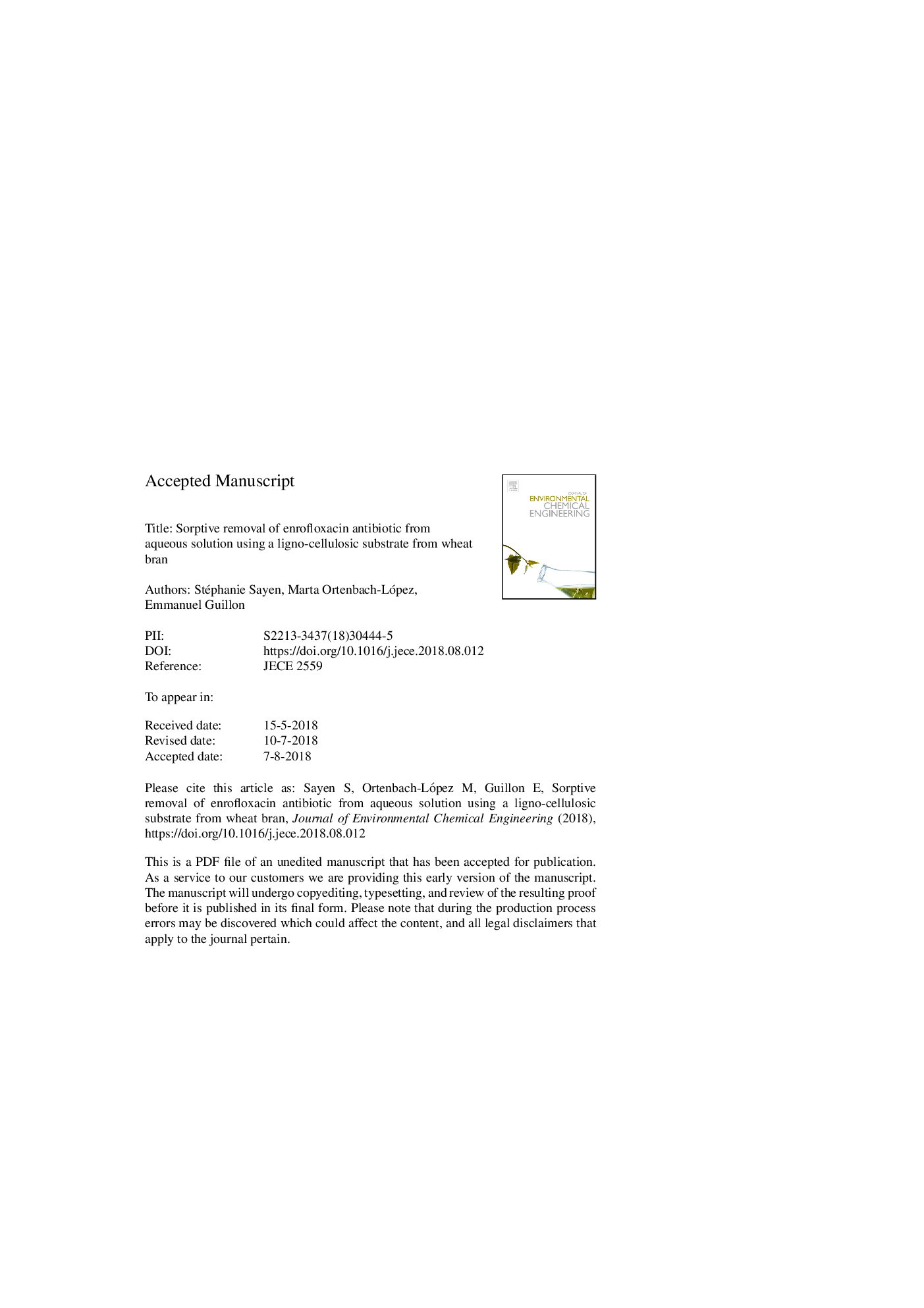| Article ID | Journal | Published Year | Pages | File Type |
|---|---|---|---|---|
| 10148784 | Journal of Environmental Chemical Engineering | 2018 | 39 Pages |
Abstract
In this study, the sorption properties of a ligno-cellulosic substrate derived from wheat bran, an agricultural by-product, were investigated in order to test its ability to remove enrofloxacin fluoroquinolone antibiotic from water. The influence of contact time, pH and concentration was studied. The pH value played an important role in the adsorption process, evidencing different sorption processes as a function of pH. The results showed that the substrate removed 100% of enrofloxacin at pH 6 in less than one hour and more than 80% above pH 4. Three kinetic (pseudo-first order, pseudo-second order and intra-particle diffusion) and three isotherm (Langmuir, Freundlich and Sips) models were tested at pH 3.7 and 6. The kinetics followed the pseudo second-order model at both pH with a higher constant rate k2 at higher pH (3.88âgâmgâ1âhâ1 at pH 6). The slower kinetics at pH 3.7 was due to intra-particle diffusion. The isotherm best fit obtained with Sips model indicated a heterogeneous monolayer adsorption of the antibiotic with a high maximum adsorption capacity of 91.5âmgâgâ1 at pH 6. The tested ligno-cellulosic substrate has emerged as a very good low-cost candidate for enrofloxacin adsorption both in terms of adsorbed amounts and of adsorption kinetics, compared to other adsorbents proposed for enrofloxacin removal.
Related Topics
Physical Sciences and Engineering
Chemical Engineering
Chemical Engineering (General)
Authors
Stéphanie Sayen, Marta Ortenbach-López, Emmanuel Guillon,
